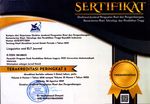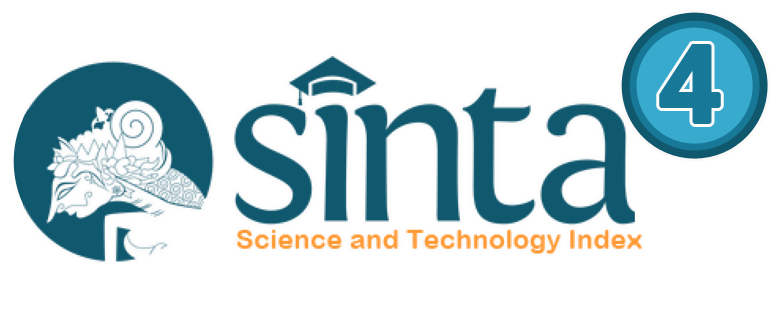Students' and Teachers’ Responses to the Practice of English Medium Instruction in the Secondary School Level: Evidence from Indonesia
Abstract
Keywords
Full Text:
PDFReferences
H. Coleman, N. F. Ahmad, N. Hadisantosa, K. Kuchah, M. Lamb, and D. Waskita, “Common sense and resistance: EMI policy and practice in Indonesian universities,” Current Issues in Language Planning, vol. 25, no. 1, pp. 23–44, Jan. 2024, doi: 10.1080/14664208.2023.2205792.
J. Chapple, “Teaching in English Is Not Necessarily the Teaching of English,” International Education Studies, vol. 8, no. 3, Feb. 2015, doi: 10.5539/ies.v8n3p1.
E. Macaro, M. Akincioglu, and S. Han, “English medium instruction in higher education: Teacher perspectives on professional development and certification,” International Journal of Applied Linguistics, vol. 30, no. 1, pp. 144–157, Mar. 2020, doi: 10.1111/ijal.12272.
J.-J. He and S.-Y. Chiang, “Challenges to English-medium instruction (EMI) for international students in China: A learners’ perspective,” English Today, vol. 32, no. 4, pp. 63–67, Dec. 2016, doi: 10.1017/S0266078416000390.
J. Dearden, “English as a medium of instruction - a growing global phenomenon,” 2014. [Online]. Available: https://api.semanticscholar.org/CorpusID:112512007
Y. Liu, “Exploring bilingual learners’ desires in English-medium studies: evidence from a Thai private bilingual school,” Int J Biling Educ Biling, vol. 25, no. 1, pp. 80–99, Jan. 2022, doi: 10.1080/13670050.2019.1631750.
A. C. Moughamian, M. O. Rivera, and D. J. Francis, “Instructional Models and Strategies for Teaching English Language Learners.,” 2009. [Online]. Available: https://api.semanticscholar.org/CorpusID:62593157
J. An, E. Macaro, and A. Childs, “Classroom interaction in EMI high schools: Do teachers who are native speakers of English make a difference?,” System, vol. 98, p. 102482, Jun. 2021, doi: 10.1016/j.system.2021.102482.
M. H. Long, “The Role of the Linguistic Environment in Second Language Acquisition,” 1996. [Online]. Available: https://api.semanticscholar.org/CorpusID:211905226
R. J. Alexander, “Towards Dialogic Teaching: Rethinking Classroom Talk,” 2008. [Online]. Available: https://api.semanticscholar.org/CorpusID:157148773
Y. Chen, “‘Talking Science’ to ‘Discourse Strategies’: Perspective Shifting from ‘Knowing’ to ‘Doing’ the Language of ScienceTang, K. S. (2021). Discourse strategies for science teaching and learning: Research and practice. New York, NY: Routledge. ISBN 9780367344245. 212 Pages, 34 B/W illustrations,” Sci Educ, vol. 105, pp. 814–821, 2021, [Online]. Available: https://api.semanticscholar.org/CorpusID:236633603
J. Hong and H. Basturkmen, “Incidental attention to academic language during content teaching in two EMI classes in South Korean high schools,” J Engl Acad Purp, vol. 48, p. 100921, Nov. 2020, doi: 10.1016/j.jeap.2020.100921.
D. Rahmadani, “Students’ perception of English as a medium of instruction (EMI) in English classroom,” Journal on English as a Foreign Language, vol. 6, no. 2, p. 131, Sep. 2016, doi: 10.23971/jefl.v6i2.432.
S. Erliana, B. Y. Cahyono, U. Widiati, and Y. Basthomi, “The management of English as medium of instruction (EMI) policy at an Indonesian technological institution,” Journal on English as a Foreign Language, 2024, [Online]. Available: https://api.semanticscholar.org/CorpusID:273767210
D. Cameron, “Bernard Spolsky, Language management . New York: Cambridge University Press, 2009. Pp. xi, 308. Pb. $45.,” Language in Society, vol. 39, pp. 564–567, 2010, [Online]. Available: https://api.semanticscholar.org/CorpusID:144156976
N. E. Simbolon, “English Medium Instruction (EMI) practice: Higher education internationalization in Indonesia,” Englisia: Journal of Language, Education, and Humanities, vol. 8, no. 2, p. 72, May 2021, doi: 10.22373/ej.v8i2.8961.
S. Baa, N. Maghfirah, and H. Borland, “The Implementation of English Medium Instruction (EMI) at the Public Secondary Schools in South Sulawesi Indonesia: Students’ Voices,” International Journal of Language Education, vol. 7, no. 3, Oct. 2023, doi: 10.26858/ijole.v7i3.43567.
D. A. Setoningsih, “Secondary Education Students’ and Teachers’ Perspectives on EMI,” English Learning Innovation, vol. 3, no. 1, pp. 17–26, Feb. 2022, doi: 10.22219/englie.v3i1.19793.
J. W. Creswell, “Educational Research: Planning, Conducting, and Evaluating Quantitative and Qualitative Research,” 2001. [Online]. Available: https://api.semanticscholar.org/CorpusID:265896851
J. I. Ibrahim, “The Implementation of Emi (English Medium Instruction) in Indonesian Universities: Its Opportunities, Its Threats, Its Problems, and Its Possible Solutions,” K@ta: A Biannual Publication on the Study of Language and Literature, vol. 3, pp. 121–138, 2001, [Online]. Available: https://api.semanticscholar.org/CorpusID:55509291
S. P. Robbins and T. A. Judge, “Organizational Behavior -14/E.,” 2012. [Online]. Available: https://api.semanticscholar.org/CorpusID:168833827
M. Miles, A. M. Huberman, and J. Saldaña, “Qualitative Data Analysis: A Methods Sourcebook,” 1994. [Online]. Available: https://api.semanticscholar.org/CorpusID:60090930
H. Rose, K. Sahan, and S. Zhou, “Global English Medium Instruction: Perspectives at the crossroads of Global Englishes and EMI,” Asian Englishes, vol. 24, no. 2, pp. 160–172, May 2022, doi: 10.1080/13488678.2022.2056794.
M. Kurniati, “Students’ Perceptions of English Medium Instruction (EMI) in Secondary School Bilingual Classes: A Case Study,” Jurnal Pendidikan Bahasa dan Sastra, vol. 23, no. 2, pp. 167–182, Apr. 2024, doi: 10.17509/bs_jpbsp.v23i2.68687.
S. Erliana, “Secondary High School English Teachers’ Perception toward English as Medium Instruction,” in Proceedings of the Annual Conference on Social Sciences and Humanities, SCITEPRESS - Science and Technology Publications, 2018, pp. 104–110. doi: 10.5220/0007416201040110.
A. Sundusiyah, “Language Policy Rationales, Appropriation and Debates: A Case of English as Medium of Instruction in Indonesia’s International-Standard Schools,” 2019. [Online]. Available: https://api.semanticscholar.org/CorpusID:214383253
I. Aizawa and H. Rose, “High school to university transitional challenges in English medium instruction in Japan,” System, vol. 95, p. 102390, Dec. 2020, doi: 10.1016/j.system.2020.102390.
L. Jiang, L. J. Zhang, and S. May, “Implementing English-medium instruction (EMI) in China: teachers’ practices and perceptions, and students’ learning motivation and needs,” Int J Biling Educ Biling, vol. 22, no. 2, pp. 107–119, Feb. 2019, doi: 10.1080/13670050.2016.1231166.
P. Su and J. Kong, “Implementing EMI in Chinese music classes: Students’ perceived benefits and challenges,” Front Psychol, vol. 14, Mar. 2023, doi: 10.3389/fpsyg.2023.1086392.
DOI: https://doi.org/10.31764/leltj.v12i2.28731
Refbacks
- There are currently no refbacks.
Copyright (c) 2024 Maulidia Rachmawati Nur

This work is licensed under a Creative Commons Attribution-ShareAlike 4.0 International License.
_____________________________________________________
Linguistics and ELT Journal
p-ISSN 2339-2940 | e-ISSN 2614-8633

LELTJ is licensed under a Creative Commons Attribution-ShareAlike 4.0 International License.
_____________________________________________________
LELTJ is abstracting & indexing in the following databases:
_____________________________________________________
LELTJ Editorial Office:













